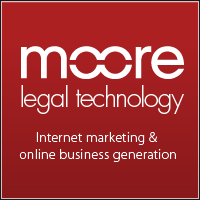Trademark law is an essential part of business and assists in protecting your assets. Without trademarks, goods and/or services would be confused for one another. What do trademarks protect? They protect a name, phrase, symbol (logo), design and any other related words. There is a process in place to assess trademark filings in the court of law. All trademarks must go through this process before becoming official. Let’s take a glance at what trademark is composed of.
Deliberation Process
The United States Patent and Trademarks Office (USPTO) is responsible for patent rulings and assessments. All filings are made to them, and the designated officials review relative information to determine the final outcome.
During the deliberation process, various factors are considered by the USPTO. They will review federal laws to assess the trademark and its viability. If it does not conform to federal and local laws, it will be rejected. If it passes this initial phase, the next step includes sifting through previously filed trademarks. Does your trademark match up with others in the database already? If so, the filing will be rejected. There is subjectivity involved in this process, but generally trademarks are able to pass this stage.
Type of Words Being Used
Trademark law is specific when it comes to what works and what does not. It is important to understand the nuances of the process and make trademark choices that adhere to established rulings.
For example, it is commonly accepted to use fanciful names as trademarks that can only be associated with a specific company. For example, “Nike” is easy to trademark because it is a freshly created company name.
Which words do not work or are placed under severe scrutiny? Descriptive words will often be rejected during this process. A name like “Rough and Tough” will be scrutinized and likely rejected because of its commonality with other similar names. It is best to avoid such examples to have your trademark accepted as quickly as possible.
Hiring an Attorney
The USPTO establishes that most filings are done through attorneys and are often successful (USPTO). Trademarks require in-depth research, including thoroughly reviewing established databases and filing the correct paperwork.
USPTO regulations substantiate the importance of getting it right the first time. An attorney will guide you through the process and remain in contact with the USPTO. This ensures the process is handled between those parties, and you can sit back and leave it to the professionals.
Infringement
If a trademark owner believes his trademark is being infringed upon, it is up to him to decide the next course of action. Should he choose to take that party to court and sue them? Should he ask them to completely change and/or tweak their current mark? There are many factors to consider, and it is a personal decision for the business and its management.
Infringement is not dealt with by the USPTO and does not go through them.
In summary, when it comes to the tricky issue of trademarks, your best advice is to get creative, making certain that what you seek to trademark is indeed unique, and hire an attorney to ensure a perfect process.
Byline
This piece was composed by Reggie Hampton, a freelance writer who focuses on legal topics such as identity theft, intellectual property law, commercial law, business law, banking law and other topics as well; to learn more about identity theft visit Protectyourbubble.com ID theft.
